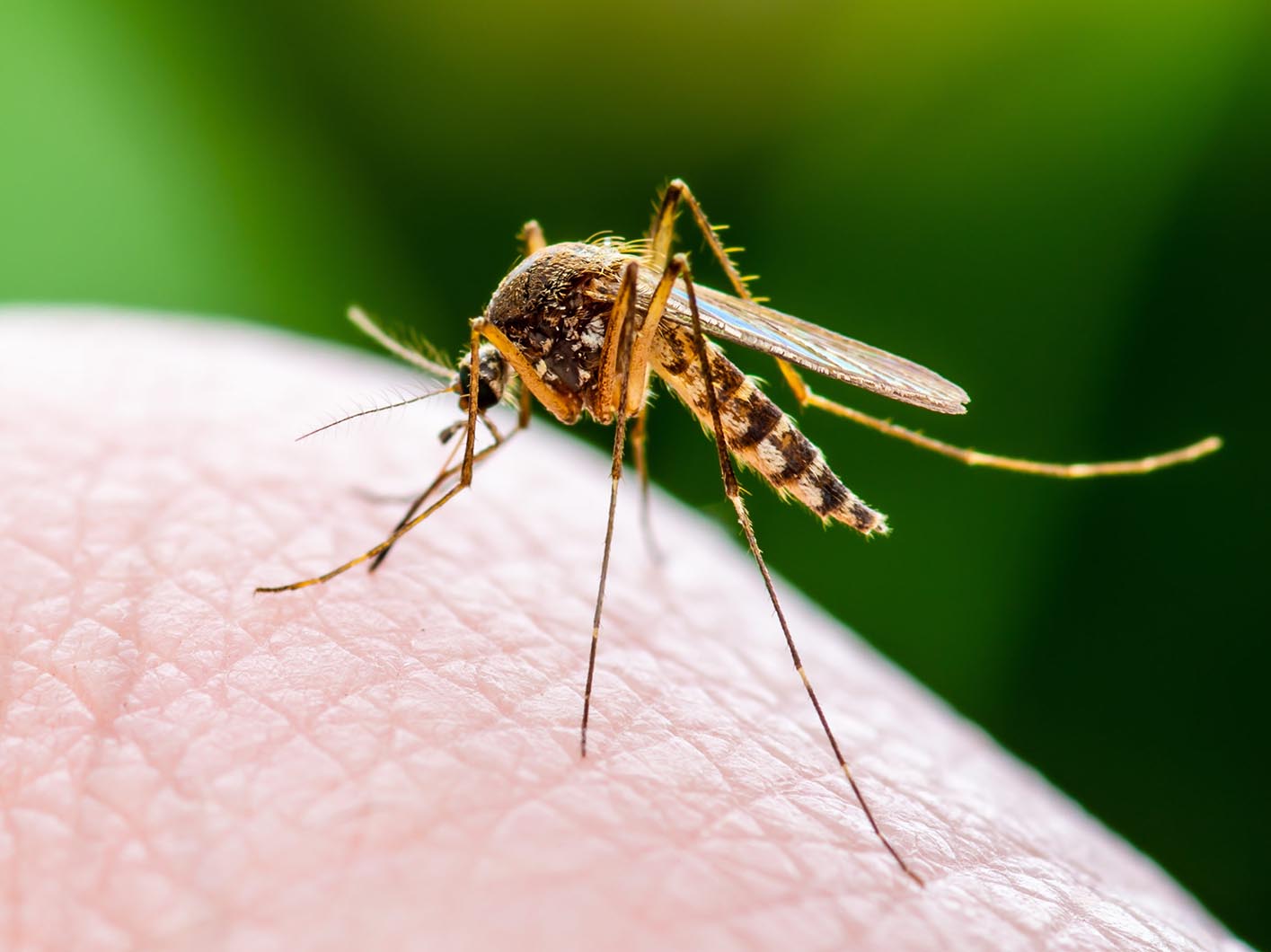
Mosquitoes Control & Treatment Services
Signs of Mosquitoes
Mosquitoes and midges can make life unpleasant. Constantly having to track down that high-pitched whine can be a pain. And when you’ve found the culprit there always seems to be another one waiting in the wings. So why is your home or business particularly attractive to mosquitoes and how can you be sure of mosquito identification? Mosquitoes often make that all-too-familiar high-pitched whine. Bites are an obvious giveaway, ranging from mildly irritating to intensely inflamed with swelling. Only the female mosquito bites humans, the males will feed off nectar and other sweet things. The adults are attracted to standing water including water butts, water trays from house plants, and water bowls, where they lay their eggs. You might spot them walking upside down on ceilings and glass surfaces. Mosquitoes travel a long way so if there’s standing water within a mile of your home it may be the source of your problems. Mosquitoes might be attracted to your lawn or shrubbery if it is well watered.
Mosquito Species
There are many species of mosquitoes, which can be found all around the world. The female species is responsible for the irritating bites we suffer from and these bites can also carry fatal diseases. Read more about the lifecycles and habits of different types of mosquitoes below.
Anopheles Mosquito (Anopheles SPP.)
The Anopheles mosquito is responsible for transmitting malaria.
Appearance
• Adult – pale and dark marks on its wings and resting 45-degree angle to the surface.
• Larval rests parallel to the surface of the water.
• Egg is about 1mm long and has floated on its sides.
Life Cycle
• Egg to adult stage takes 6 – 10 days.
• Complete metamorphosis – egg, larval, pupa and adult.
Habits
• Habitat – prefer clean and unpolluted water.
• Biting rhythm – bite at night and rest indoor and outdoor (depends on species).
• Prefer darker colors.
• Female with one blood meal can lay 50 – 150 eggs.
Aedes Mosquitoes (Aedes Aegypti)
The bites from an Aedes mosquito peak at the change of light intensity (after sunrise and before sunset).
Appearance
• Adult has black and white markings.
• Larval rest 45 degrees from the surface of the water.
• Egg is black in color and shape like a rugby ball.
Life Cycle
• Egg to adult stage takes 6 – 8 days.
• Complete metamorphosis – egg, larval, pupa, and adult.
Habits
• Habitat – container breeder especially man-made containers with clean water.
• Prefer darker colors like black and red.
• Can fly short distance (50 – 100m).
Culex Mosquito (Culex Tritaeniorhynchus)
Culex mosquitoes are the main vector for Japanese B – Encephalitis
Appearance
• Adult – thorax, legs, and veins on the wings are always covered with brown scales. Dull in color. The tip of the abdomen is always blunt.
• Larval rest 45 degrees from the surface of the water.
• Egg is brown, long and cylindrical, vertical on the water surface, cemented in a raft of 300 eggs. Raft usually 3 – 4mm long and 2 – 3mm wide.
Life Cycle
• Egg to adult stage takes 6 – 10 days.
• Complete metamorphosis – egg, larval, pupa, and adult.
Habits
• Habitat – mainly bred in paddy fields, polluted stagnant water and drains.
• Biting rhythm – bite at night and usually rest indoor before and after the blood meal. Sometimes they may rest outdoor.
• Prefer darker colors.
• Long distance fliers.
Biting Midge (Culicoides impunctatus)
Appearance
• Small flying insect.
• Adult midges are about 1.5 – 4.0mm long.
Life Cycle
• Lifespan of 20 to 30 days.
• Hatched from eggs.
• Egg batches contain between 30-100 eggs.
• 1 to 2-day larvae stage.
Habits
• Lives in bogland, near lakes and ponds, marshland, rivers and streams, and general wetlands.
• Feeds on blood.
• Tendency to swarm.
• Found in upland and lowland areas especially in the northwest of Scotland from late spring to late summer.
• Most active at dusk and dawn.
Dark Winged Fungus Gnat (Family Sciaridae)
The Dark Winged Fungus Gnat can cause damage to the root of plants.
Appearance
• Adult – 5 – 7mm. Grey/black bodies.
• Larvae up to 5.5 mm long. White, shiny blackheads and transparent.
Life Cycle
• Females lay up between 100 and 300 eggs, which hatch in 4 to 6 days.
• The larvae feed for 12 to 14 days.
• The pupal stage lasts about 6 days.
• Adults live about 7 to 10 days



